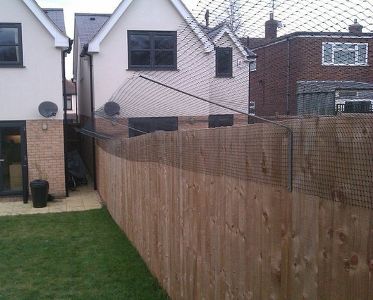Advertisement
Lifestyle
How and Why to Build a Cat Garden


We love our little felines, but we also love our gardens, and sometimes our curious cats can get in the way of growing the perfect garden. They can dig up seeds, attack birds, eat insects you might want, and, not to mention, eat all your plants, some of which may be toxic to them.
However, cats can also be beneficial by keeping away mice or rabbits that could also threaten your garden. Therefore, a good compromise is to give cats their own space in your garden, or just make them a garden of their own.

A good start is making sure the garden area is completely enclosed. You don’t want your pet cat getting out and roaming the city or neighborhood where it could get hurt. The fence should be at least six feet tall with a wire mesh overhang that’s about the length of a cat. (For fencing options, you can look here.) Also, be sure to check there are no spaces under the fence larger than two inches that a cat might be able to squeeze through.
After you have designated an area, it’s time to start thinking about plants. If you’ve ever witnessed Mittens nibbling on your ficus (which is toxic to cats), know that that’s actually normal. Cats can naturally crave grass to help digestion and remove hair balls. Therefore, you should plant plenty of catnip, catmint, and other plants they like. While many cats love catnip, some just find that it isn’t their cup of tea, so don’t be offended if they don’t gravitate toward it. Cat thyme and catmint are also favorites, as well as valerian. Valerian is a sedative for humans, but a stimulant for cats, according to the University of Vermont. Be sure to consult the ASPCA’s list of plants toxic to cats before planting anything.
Now it’s time to make your space cat-friendly. The garden should get plenty of sun, but you can use plants to designate shady areas where your cat might like to rest. Putting two large pots together with overarching plants creates a nice, little cave for them, as well as having bushes they can crawl or hide under.

Use organic soil and set up a grassy spot where they can relax. It doesn’t have to be big. We all know cats like squeezing into small spaces. A grass patch is perfect if you only have a balcony or small outdoor space to work with. Leaving a patch of soil also isn’t a bad idea, as they may like rolling or digging in it.
Next, you might want to include a water feature. Cats love moving water since it signifies clean water (to them). It will also make your garden that much more inviting and unique. Adding a bench is also not a bad idea since it provides a spot for you to enjoy the space as well as your cat.
Even if you may not have any outdoor space, you might still want some cat grass in your home to keep your cats from nibbling on any other plants.
There are some methods you can use, indoors or out, to keep any cats from eating your plants. Joanne Brown from the Master Gardner‘s program at Penn State Cooperative Extension suggests, “spraying a vinegar-and-water solution around the base of your acid-loving plants or putting lemon and orange peels around your plants will keep cats away.” She also suggests putting hard materials around the plants, like upright twigs or gravel that they may not want to walk on.
After you have your plants and space all set up, let your cats in and watch them enjoy! Now you both have your very own gardens.












